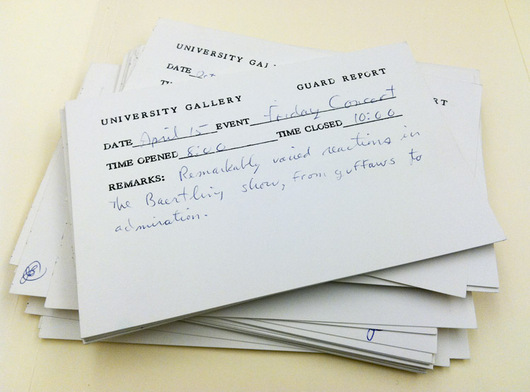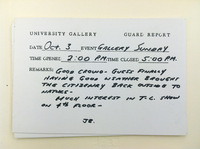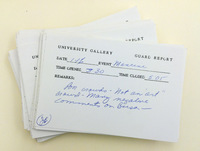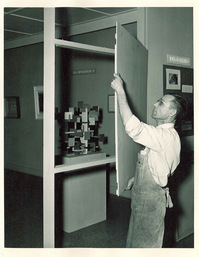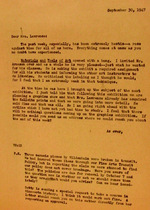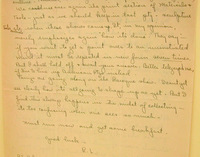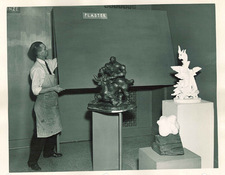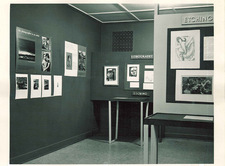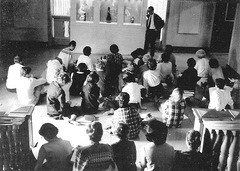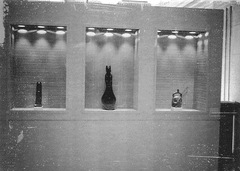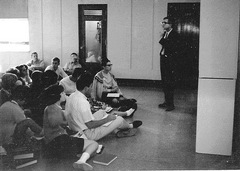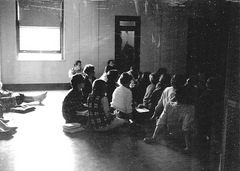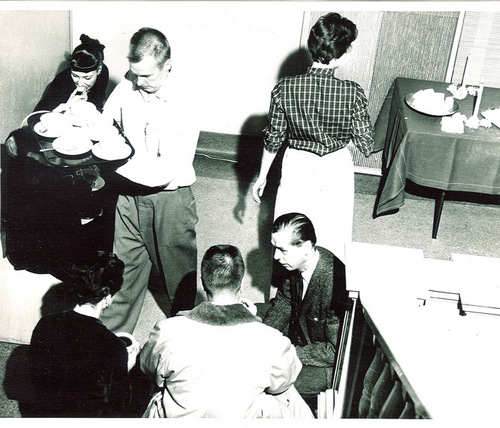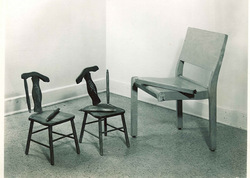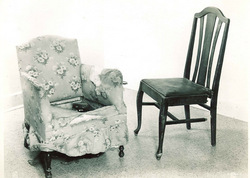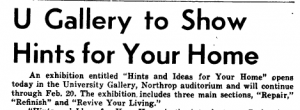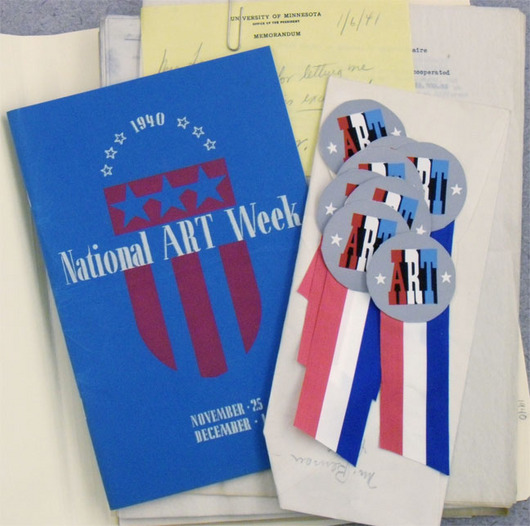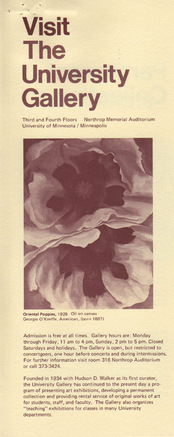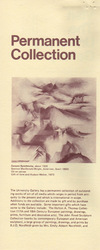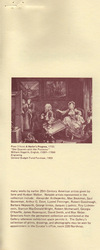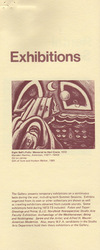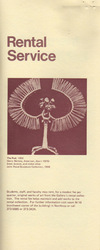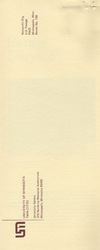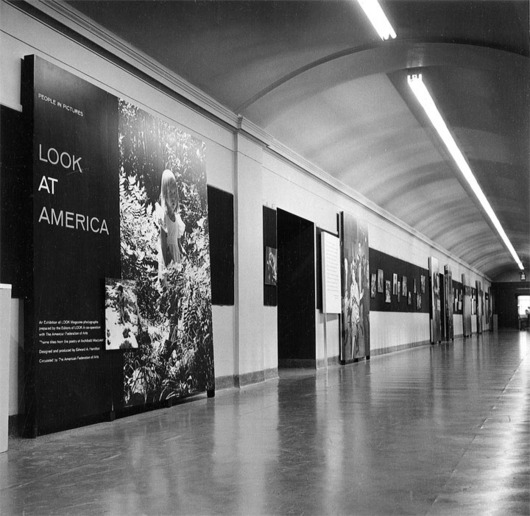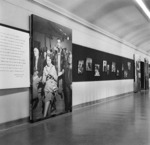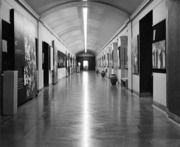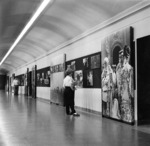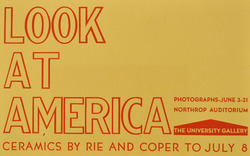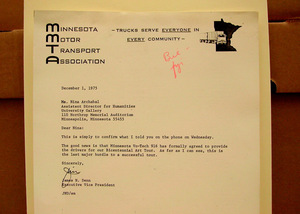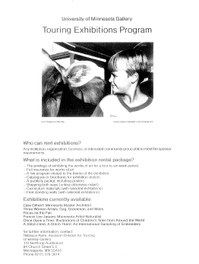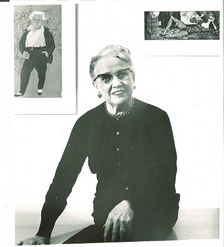 Several boxes already processed contain “Museum History” folders and others similarly titled. However as we near the end of processing the first set of 116 boxes, which document 77 years of institutional history, the “Museum History” folder in Box 100 might be the most intriguing yet. The contents of this particular folder include a 24 page report, each word typed on delicate light-weight paper. A hand-written notation on the first page indicates, “Mrs. Lawrence’s 25 yr. report.”
Several boxes already processed contain “Museum History” folders and others similarly titled. However as we near the end of processing the first set of 116 boxes, which document 77 years of institutional history, the “Museum History” folder in Box 100 might be the most intriguing yet. The contents of this particular folder include a 24 page report, each word typed on delicate light-weight paper. A hand-written notation on the first page indicates, “Mrs. Lawrence’s 25 yr. report.”
In the section titled, “Objectives Outlined,” a reflective description of the curator’s (Lawrence’s) initial responsibilities in the Gallery was found:
“The other duties of the new curator included holding round-table discussions with students; organizing a student art society, which would bring together artists and students and expose students to cultural matters; seek out lecturers and provide demonstrations on art subjects; and in general “advertizing and selling” art to the student body and faculty, in ways proper to the dignity of the institution. Other suggestions followed; by this time the task seemed overwhelming. Mrs. Lawrence explained that she was amazed and somewhat confounded, although also flattered, that they would think that she could handle such an assignment. The job called for diplomacy and great understanding on a full time, not a half-time basis. As for the Gallery itself, she felt she was not qualified, had had no training, and would not know where to begin. She was sorry, but with her other assignments of teaching and counseling, she believed that they had mistaken her capabilities. But when one comes into one’s first job with the University, one does not usually refuse to cooperate when given an assignment.”
Despite her initial question of confidence, Lawrence embraced her first University assignment in 1934 and continued to guide the University Gallery until her retirement in 1957.
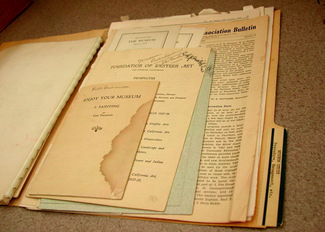 In Box 89, a folder titled, “Museum Study, Procedure, Management Etc., ” dated 1934, contains reference materials that Lawrence kept on gallery practices. In addition to a pamphlet from the Toledo Museum, titled, “The Museum Educates,” and clippings from “The Art Digest,” fliers produced by the Newark Museum titled, “The Museum,” were found that outlined recommendations for running a museum or gallery. The article, “Case Movers” addresses, “Mr. Dana’s Original Solution of a Difficult Museum Problem.” “A Convenient Gallery Stool” suggests that a bench or stool placed within a gallery addresses the ‘museum fatigue’ experienced by most visitors.
In Box 89, a folder titled, “Museum Study, Procedure, Management Etc., ” dated 1934, contains reference materials that Lawrence kept on gallery practices. In addition to a pamphlet from the Toledo Museum, titled, “The Museum Educates,” and clippings from “The Art Digest,” fliers produced by the Newark Museum titled, “The Museum,” were found that outlined recommendations for running a museum or gallery. The article, “Case Movers” addresses, “Mr. Dana’s Original Solution of a Difficult Museum Problem.” “A Convenient Gallery Stool” suggests that a bench or stool placed within a gallery addresses the ‘museum fatigue’ experienced by most visitors.
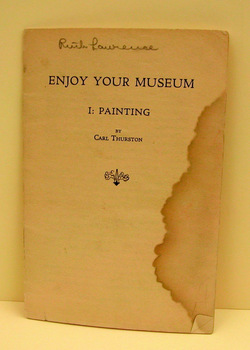 A small book titled, “Enjoy Your Museum,” by Carl Thurston offers simple lessons in carrying out the work in a museum. Perhaps such lessons inspired Lawrence’s work. From “Chapter II: What to Expect From a Picture:”
A small book titled, “Enjoy Your Museum,” by Carl Thurston offers simple lessons in carrying out the work in a museum. Perhaps such lessons inspired Lawrence’s work. From “Chapter II: What to Expect From a Picture:”
“Don’t expect too much.
Don’t expect it to pour out entertainment like a radio while you sit passively in front of it. It corresponds to a sheet of music rather than to any musical machine: it has to be played, and no one can play it for you but yourself. Some paintings can be played at sight, others need long study and practice; with each one you ultimately reach a stage at which it at least seems to play itself…
Don’t expect too little from a picture.
It is something more than a careful copy of nature. It is something more than a pretty story told in paint. It is more than a pattern of colors or a decorative arrangement of shapes. It is all of these things at once and many more. It is a sort of crossword puzzle which can be read up and down, diagonally and across, backward and forward, and whose separate words, taken consecutively in any order, form a poem.”
